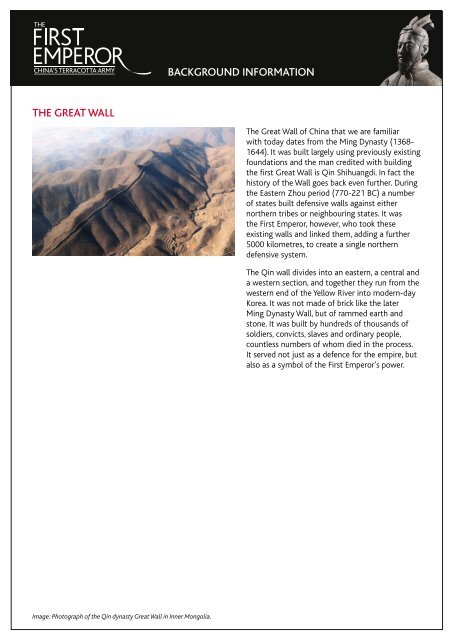RESOURCES FOR TEACHERS - British Museum
RESOURCES FOR TEACHERS - British Museum
RESOURCES FOR TEACHERS - British Museum
Create successful ePaper yourself
Turn your PDF publications into a flip-book with our unique Google optimized e-Paper software.
THE GREAT WALL<br />
Image: Photograph of the Qin dynasty Great Wall in Inner Mongolia.<br />
BACKGROUND IN<strong>FOR</strong>MATION<br />
The Great Wall of China that we are familiar<br />
with today dates from the Ming Dynasty (1368-<br />
1644). It was built largely using previously existing<br />
foundations and the man credited with building<br />
the first Great Wall is Qin Shihuangdi. In fact the<br />
history of the Wall goes back even further. During<br />
the Eastern Zhou period (770-221 BC) a number<br />
of states built defensive walls against either<br />
northern tribes or neighbouring states. It was<br />
the First Emperor, however, who took these<br />
existing walls and linked them, adding a further<br />
5000 kilometres, to create a single northern<br />
defensive system.<br />
The Qin wall divides into an eastern, a central and<br />
a western section, and together they run from the<br />
western end of the Yellow River into modern-day<br />
Korea. It was not made of brick like the later<br />
Ming Dynasty Wall, but of rammed earth and<br />
stone. It was built by hundreds of thousands of<br />
soldiers, convicts, slaves and ordinary people,<br />
countless numbers of whom died in the process.<br />
It served not just as a defence for the empire, but<br />
also as a symbol of the First Emperor’s power.
















